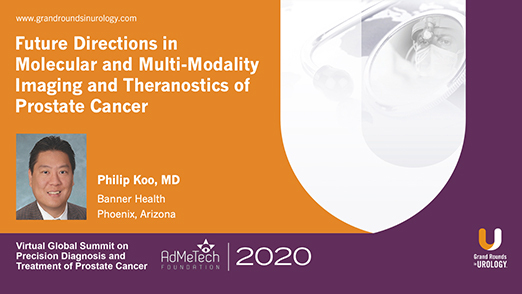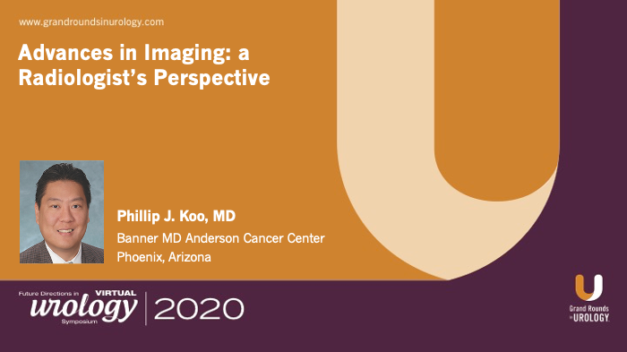Next Generation Imaging for Prostate Cancer
Phillip J. Koo, MD, Division Chief of Diagnostic Imaging and Northwest Region Oncology Physician Executive at the Banner MD Anderson Cancer Center in Phoenix, Arizona, gives an overview of the current state of next generation imaging (NGI) for prostate cancer and how it compares to conventional imaging, i.e., bone scans and CT scans. He begins by noting that while there are strengths to conventional imaging and the NCCN clinical guidelines still recommend its use, it misses a lot of cancer, especially in patients with low PSA or biochemical recurrence (BCR). Dr. Koo suggests that NGI is to conventional imaging as a high-definition television is to a conventional one: both show a picture, but one shows a clearer one. He briefly looks at how NGI for prostate cancer works, explaining that NGI takes advantage of unique biological aspects of prostate cancer carcinogenesis and that increased metabolism and vascular changes in prostate cancer cells can be evaluated with radiolabeled analogs of choline, acetate, glucose, amino acids, and nucleotides. Dr. Koo then goes over the different approved NGI PET/CT options, including 11C-choline, 18F-fluciclovine, 68Ga-PSMA-11, and PyLARIFY PSMA. He particularly focuses on the 2 PSMA ligands, since data indicates that PSMA PET/CT performs better than anything used in the past, detecting more cancer at lower PSA levels than other techniques and in places where prostate cancer has rarely been seen before. Dr. Koo notes that PSMA is not infallible though, highlighting a study showing that while 68Ga-PSMA-11 generally has better detection rates than fluciclovine, fluciclovine has a higher detection rate in the prostate bed, suggesting that each radiopharmaceutical has its own strengths and weaknesses. He concludes with a summary of when and how clinicians should use NGI, emphasizing that NGI is here to stay and the field of urologic oncology should be prepared for rapid change.
Read More






